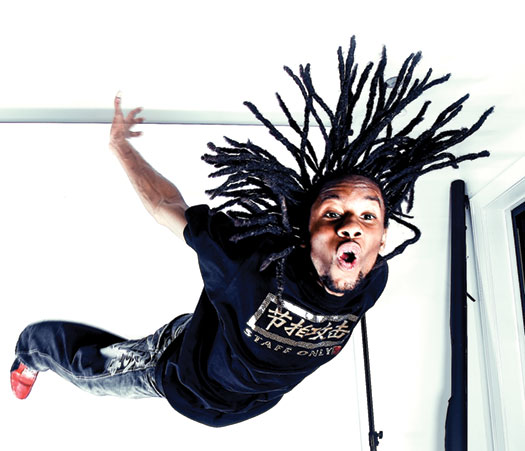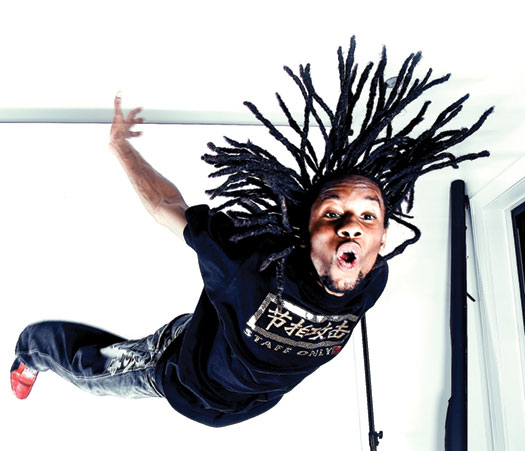BTN.com staff, October 25, 2014

Inspired by their experiences in college and elsewhere, these Pathfinders are passing by the typical, well-trod career paths and blazing their own trails. We?ll explore the unconventional approaches these Big Ten alums are taking to work.
As a kid who grew up on the West and South Sides of Chicago, professional dance artist Jarius King felt like a stranger in a strange land when he decided to attend the University of Wisconsin via the school?s POSSE Program.
Of course, there?s the fact that the student body is predominately Caucasian - King is African-American - and Madison has a relaxed, small-city vibe that contrasts greatly with a bustling metropolis like Chicago. But King also found himself having to defend the Chicago Bears in a sea of Cheeseheads, even though he says he?s not really a sports fan.
However, it was through ?U-Dub? that he truly tapped into the worldwide phenomenon of ?breaking? - known to many people as ?breakdancing,? even though King says that?s not the proper term within hip-hop culture.
He was able to use his study of East Asian languages and literature (with a specialization in Chinese-language lit) to travel to Hong Kong. While there, he connected with the local breaking community, and discovered that the interest in this dance style spans the globe. He credits the University of Wisconsin?s encouragement to create one?s own unique educational path with allowing him to openly share his desire to dance and knowledge of hip-hop culture.
?It was because I was there, the student power structure that exists, that I was able to think outside the box, which was really great for me,? he said.
That represented a huge leap for King, who required a spinal fusion when he was 15 years old due to severe scoliosis. He began dancing after his back surgery, but it wasn?t until he arrived at Wisconsin that he realized how far he could take his interest in breaking.
It wasn?t always smooth. King and another Wisconsin alum, Henry Gomez, had to fight negative perceptions of key figures in order to hold the first-ever hip-hop culture event in Madison, which eventually grew into Breakin? the Law. Fortunately, they found allies, such as the Associated Students of Madison?s Legislative Affairs and Diversity Affairs Committee, that helped them get the event approved.
King was the co-director of Breakin? the Law, which ran for 11 consecutive years, along with UW alumna Katrina Flores. (The final installment was held in Madison this spring.) The event provided workshops, panel discussions and films, along with a dance competition that was unusual for its scope as well as its home address. For his role in this festival and international outreach on behalf of his chosen art form, King was given a Distinguished Alumni Award from the university?s alumni association.
Today, King is part of dance groups around the globe, include Motion Disorderz from Milwaukee. On his Facebook page, he identifies himself as a performing artist, instructor, emcee and businessman, but he also notes that he is an educator, which is an important part of what he tries to accomplish through breaking.
?First and foremost, I want to make people understand this is a dance of history, all the way back to the slave trade,?? he explained. ?A lot of the traditions and musical styles have a history and legacy which is rooted in slavery, specifically within the North American continent.
?There are other things that shape the dance, especially Puerto Rican influences, and they have a history of slavery as well. But I want students to learn that it is a culture, not just a cool thing to do in a music video.?
Any video of King performing will show that breaking is not all done with the dancer sprawled on the ground, as it?s often represented in modern American movies and TV shows.
?The power moves (spins) you see are only one aspect,?? King said. ?But there?s so many other aspects of the dance. The best example is the footwork we do. It?s not a part of any other kind of dance in the world.
?A lot of people think of breaking as being about just spins and flips, which is the more acrobatic part of the dance. But it is so much more than that. There?s so many creative elements that comprise the dance. You can draw from a multitude of influences. I have personally used drills I learned from tennis warmups. Martial arts, and kung fu cinema especially, had a large influence on the dance as well.?
King spends much of his time today at home working with Chicago schools and community groups to educate the kids from his neighborhood about his life?s passion. He?s currently involved with the Firehouse Community Arts Center in the North Lawndale neighborhood, and he?ll be playing a major part in curating the dance program.
?I wanted to come back and make an impact on my city and work directly with the community,?? he said. ?I am an artist and dedicated to what I guess you could call my ?shtick.??







 See what's coming up live on B1G+ every day of the season at BigTenPlus.com.
See what's coming up live on B1G+ every day of the season at BigTenPlus.com. 
